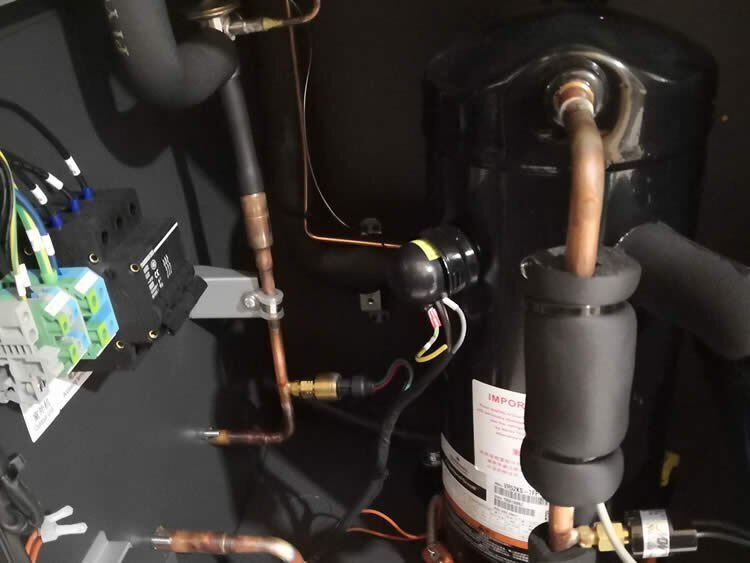This site uses cookies. Continuing to browse means you agree to our use of cookies.Cookies and Privacy Policy>![]()
This site uses cookies. Continuing to browse means you agree to our use of cookies.Cookies and Privacy Policy>![]()
Product dynamics of precision computer room air conditioning, UPS power supply, cold and warm dry wet, etc
Precision air conditioning, UPS power supply and other data center room products
Repair and maintenance of computer room air conditioning and precision air conditioning

Heat Exchange Imbalance Principle
Frosting occurs when evaporator heat absorption < refrigerant evaporation rate, causing incomplete vaporization and liquid refrigerant return to the compressor
Critical indicator: Suction superheat should be maintained at 5-8°C; values below 2°C indicate frosting risk
Fault Tree Diagram
Compressor Frosting
Refrigerant Cycle Abnormality
Airside Malfunction
Control System Failure
Refrigerant Shortage
Expansion Valve Failure
Filter Clogging
Fan Malfunction
Sensor Drift
PLC Logic Error
| Cause Category | Test Parameters | Professional Tools | Risk Level |
|---|---|---|---|
| Refrigerant Shortage | Low high/low pressures, bubbles in sight glass | Electronic scale for refrigerant recovery | ★★★★ |
| Expansion Valve Stuck | Uneven frosting, abnormal opening feedback | Valve disassembly + coil resistance test | ★★★★ |
| Evaporator Fouling | Fin pressure drop >30Pa | Particle counter + endoscope | ★★★ |
| Fan Speed Reduction | Measured airflow <80% rated | Anemometer + current clamp | ★★★ |
| Filter-Drier Clog | Temperature difference >3°C | Infrared thermal imager | ★★ |
| Humidity Sensor Fail | RH deviation >5% | Saturated salt solution calibration | ★★ |
Step 1: Emergency Shutdown
Cut power immediately to prevent liquid slugging damage
Apply warm towels to frosted areas (NEVER pour hot water directly)
Step 2: Systematic Troubleshooting
Refrigerant System Check
Normal range (R407C): High 1.5-2.0MPa, Low 0.4-0.6MPa
Use manifold gauges:
Refrigerant purity test: Replace if moisture >100ppm
Expansion Valve Adjustment
Theoretical Opening = (Current SH ÷ Design SH) × Factory Setting
Example: Design SH 5°C, actual 2°C, factory 4 turns → Adjust to (5/2)×4=10 turns
Airside Maintenance
Replace if bearing clearance >0.15mm
Replace capacitor if capacity deviation >±10%
Use pH7-8 neutral detergent
Water pressure <0.3MPa to prevent fin damage
Clean evaporator:
Fan inspection:
Step 3: Verification Test
Step-load test:
| Load Stage | Duration | Permissible Frosting |
|---|---|---|
| 25% | 30min | Light condensation at base |
| 50% | 1h | No frost on suction line |
| 100% | 2h | Stable superheat at 5±1°C |
Smart Monitoring
Primary (SH <3°C): Auto-increase valve opening 10%
Critical (SH <1°C): Forced shutdown
Install real-time superheat monitor (e.g., Danfoss AK-CC550)
Set two-tier alerts:
Optimized Maintenance Intervals
| Component | Standard Cycle | High-Dust Cycle |
|---|---|---|
| Air Filter | 1 month | 15 days |
| Evaporator Clean | 3 months | 1 month |
| Refrigerant Moisture Test | 2 years | 1 year |
Retrofit Recommendations
Install suction accumulator (intercepts >98% liquid refrigerant)
Upgrade to electronic expansion valve (e.g., Emerson EX5 series, ±0.5°C accuracy)
Case: Cyclic Frosting in Variable-Speed Compressor
Symptom:
Frosting at low frequency (<30Hz), resolves at high frequency
Root Cause:
Oil return design flaw during low-speed operation
Solution:
Switch to higher viscosity oil (POE→PVE)
Install oil level balancer
Adjust parameters: Minimum speed ≥35Hz
Prohibited Actions
Starting frosted compressor (valve plate fracture risk)
Open-flame thawing (may ignite insulation)
Essential PPE
Safety goggles and cryogenic gloves for refrigerant handling
Confirm capacitor discharge (<50V) before electrical work
Note: For R32 flammable refrigerant systems, explosion-proof equipment and adequate ventilation are mandatory.